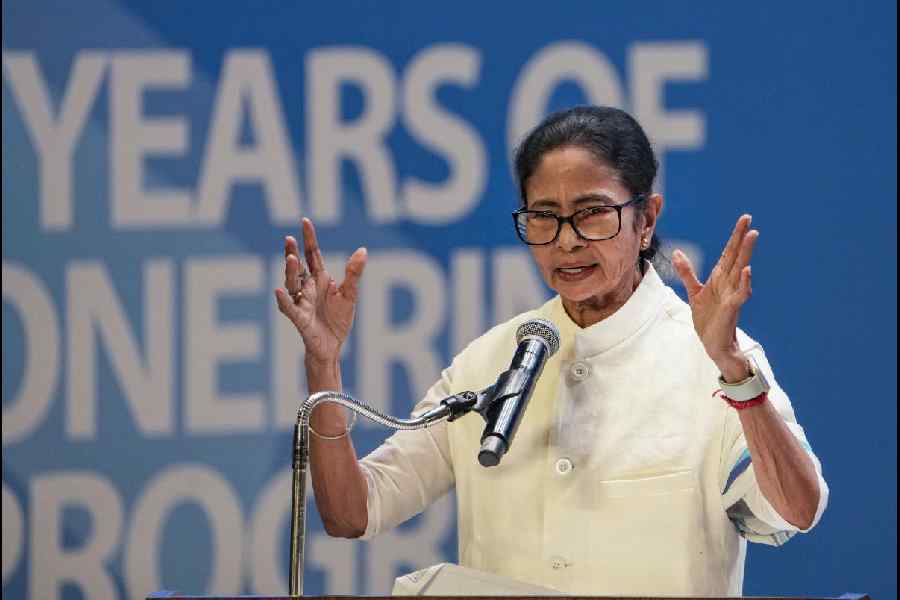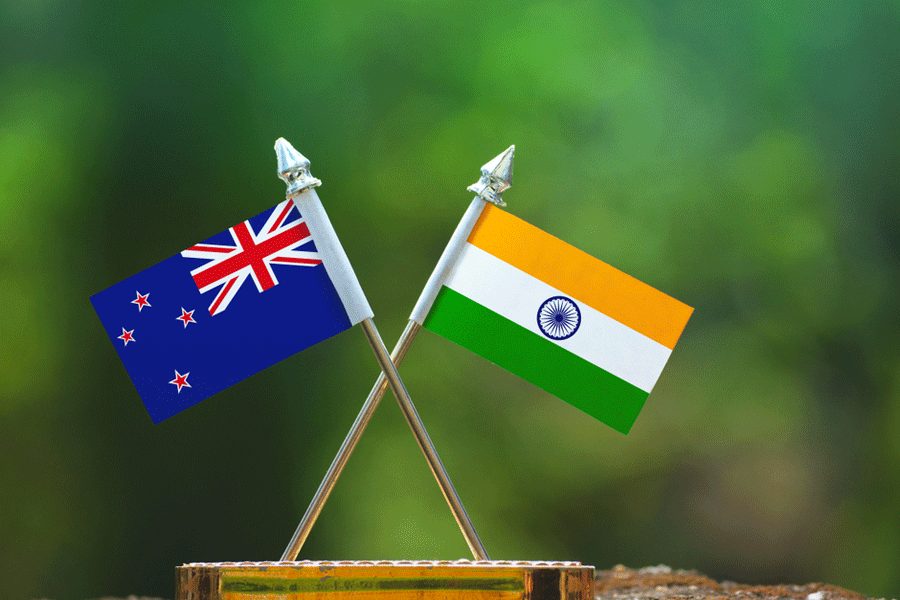 |
| WRITE STUFF: Patrick French at the launch of his book in Delhi recently |
Patrick French begins his new book India: A Portrait with a joke. It’s about an Indian businessman in New York who borrows $5,000 from his bank before going on a business trip and hands in his £2,50,000 Ferrari as collateral. On returning from India, he pays back the $5,000 plus interest of $15.41 and recovers his Ferrari.
The bank, which has discovered the Indian is a multi millionaire, has an obvious question: “What puzzles us is, why would you bother to borrow $5,000?”
The man’s answer, which is said to provide an insight into the cunning calculations of today’s Indian entrepreneur, is: “Where else in New York City can I park my car for only $15.41 and expect it to be there when I return?”
Attempting a portrait of India is a daunting business. French’s book is best read not from beginning to end but by darting around, picking a section here or a section there, as with a box of Quality Street (Nestle’s popular selection of sweets), for he has stitched together a series of snapshots.
“They aren’t random, they were carefully selected,” he assures me.
He could probably come up with enough evidence to argue the book shows both the positive and the negative sides of modern India. He has called his book “a portrait” of India and doesn’t quite agree with me that he could have described it more accurately as “a dark portrait” of India. It’s certainly not a sentimental puff for “India shining”.
“India is never short of horror stories,” he writes.
 |
Most foreigners, including V.S. Naipaul, the subject of French’s devastating biography, need local interlocutors to get under the skin of India. But in the story that I found most horrifying, French didn’t. As French reveals while clinically analysing how a corrupt and incompetent UP police force completely mishandled the investigation into the murder of 14-year-old Aarushi Talwar in Noida: “Nupur’s husband, Rajesh Talwar, was the prime suspect. I had been Dr Talwar’s patient, and had sat in his dentist’s chair. I knew him only as a bearded, avuncular man who had gentle hands, even when he was probing your molars.”
The introduction had come via an uncle of French’s wife, Meru Gokhale, daughter of Namita Gokhale, the writer and currently one of the bigwigs of the DSC Jaipur Literature Festival. When the murder investigation was prised from the hands of the UP police and taken over by the CBI, there were hopes progress would be made.
“But the CBI turned out to be useless,” French tells me.
I happen to think that French’s account of the Aarushi murder is the best thing in the book. Reading what the police did to her parents — French tells me that “I have no doubt they are innocent” — the civic Indian should be filled with rage. You wonder how this can happen in India, the world’s biggest democracy with a hundred TV channels, etc, etc… It certainly made me recall another tragedy — the so-called “suicide” of Rizwanur Rahman in Calcutta. It is a pity that French did not find time to investigate this case with the same forensic skill he has applied to the Aarushi killing.
Indians were drip-fed poisonous morsels from the Aarushi investigation day by day but when you read French’s detailed account from the beginning, you realise the police have messed up big time.
Aarushi was murdered in her bedroom on the night of May 15, 2008. The next day, the crime scene was not sealed off so that visitors, ghouls and TV crews trudged all over the place and destroyed evidence. What is astonishing is that the badly decomposing body of the family’s Nepali servant, Hemraj Banjade, initially thought to be the culprit, was not discovered until two days later on the terrace by a visiting retired police officer.
“The police had failed to notice,” is French’s English understatement. He writes: “Their failure to investigate or even to secure the crime scene the previous day was a shocking demonstration of incompetence.”
Worse was to follow. Aarushi’s grief-stricken dental surgeon father, Rajesh, who was held “in prison for 50 days and nights”, and mother, Nupur, an orthodontist, were accused of murdering their own daughter. Stories of sexual perversion, drugs, swinging, honour killings and other wild theories were thrown in by police without a shred of evidence to back up their “Kafkaesque form of investigation”.
French puts some of this down to a cultural clash between the middle class Talwars and the ill-educated and poorly-trained UP police. It is worth noting that Aarushi appeared to communicate with her parents almost entirely in “textese”, for example, “Dad u r da bestest dad any1 can have. U rok ma world.”
In French’s opinion, “the Talwars faced Uttar Pradesh street justice, in which nobody was protected from wrong…the police had concocted a story in the hope they could close the case. They nearly succeeded.”
I found myself less engaged by French’s take on politics than in his conversations with Delhi gigolos (Rs 2.5 lakhs for two hours for the best models) and his sharply observed vignettes of Indian life — “an old man takes his belly for a walk in a park, tailed by a phone carrying attendant” or “a boy of 10 is spoon-fed apple pie by a member of staff, not because he cannot do it himself but because he is tired after school…a girl of 16 will order her maid to serve every last item on to her plate, and even to squirt the tomato ketchup on the side”.
French has dedicated his book to his wife, Meru Gokhale, and thanked his mother-in-law in the acknowledgements but one glaring omission is that he has refrained from writing about marrying into India. After all, the cover claims the book is: “An intimate portrait of 1.2 billion people”. He laughs when I ask about this: “That’s for another day…in the distant future.”
A foreigner reading the book may conclude that French has been utterly honest and almost done to India what he did to Naipaul. The foreigner may also conclude that some Indians are not very nice, which let’s face it, they are not.










